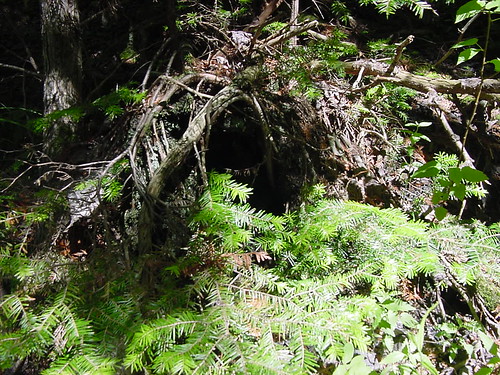Video shows female gathering nesting material and the nest sight with two egg.
Wet habitat is a beloved haunt; preferably dark and dank wooded wetlands dotted with tree-less fen or bog pockets. Because of this, northern waterthrush and I regularly interacted in the wooded dune/swale complexes along Lake Huron in the northeastern lower peninsula of Michigan.
Nesting season is a favored time of year; not so much the spring and fall migration seasons. I love searching for wild bird nests and observing and experiencing their nest cycle from nest building to young leaving the nest. The northern waterthrush nest eluded me for years.
One day in May 2005, I sat quietly in a cedar swamp between Squaw Bay and Devils Lake south of Alpena, Mi. I was here before dawn of a mind to watch a ruffed grouse drumming on his drumming log nearby. Dawn approached and I could see him moving around log. Two hours later he was still walking around but had not climbed atop the log to commence drumming. Obviously, he was aware of my presence. This prompted me to move further away. No sooner had I sat down in my new location than a male northern waterthrush began singing. Then, only moments later, a female landed near a moss covered log and began gathering the moss in her beak. Then, she flew away about 30 yards. I lost her in the darkness of the cedar swamp floor.
My heart was pounding. "Just be patient ... wait ... wait ... wait." I told myself. Suddenly she was back gathering more moss. I shifted a bit and brought my binoculars up to try and follow her. Thirty minutes later, after a few more trips to the moss, I had my scope trained on the location she seemed taking the moss. Two hours later I was sure of the spot. Daily, for another 5 days, I watched her from various other locations, with my spotting scope, as she worked to build her nest. Then, she stopped the building activity and I rarely saw her. Although the male was bringing food to her at the nest sight. Two days later I approached the nest and confirmed a nest with two eggs. I observed the nest sight for another month until just before the young left the nest.

Northern Waterthrush Nest with eggs



